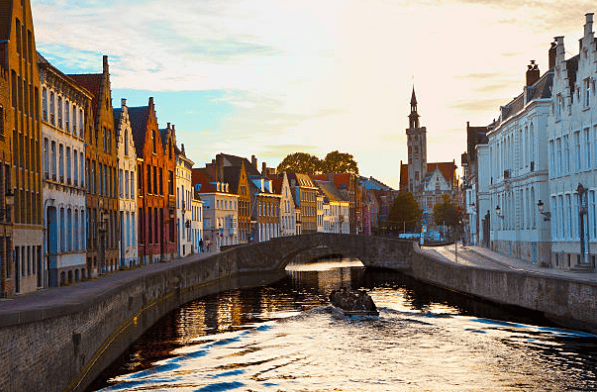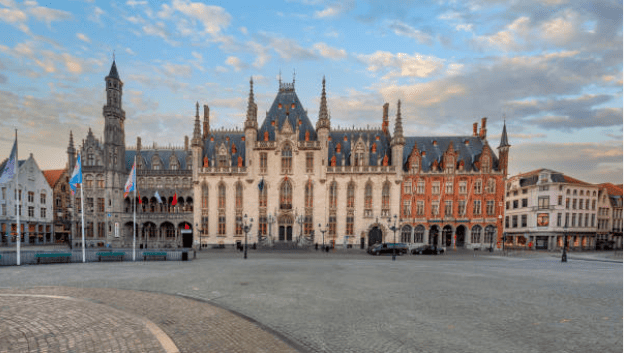
Brussels or Bruges? If you’re planning a trip to Belgium, the choice often comes down to these two cities. While other Belgian cities like Antwerp and Ghent are also interesting and worth visiting, Brussels and Bruges are the main destinations for tourists exploring Belgium. With winter approaching and plenty of time to travel around Europe, I thought, why not visit both cities? So, I hopped on a Flixbus from Amsterdam to Bruges, Belgium. It turned out to be a perfect decision—much like Strasbourg, Bruges is often referred to as a fairytale town in Europe. This small city is just like something out of a childhood storybook.
Exploring Bruges, Belgium: From Prosperous Trade City to Tourist Favorite

Walking along the cobbled streets, passing beautiful canals and rows of old brick houses in Bruges, Belgium, I couldn’t help but wonder how such a picturesque city came to be. Our tour guide, Pascal, who’s from the Netherlands, explained that Bruges was once a thriving trading city. No wonder the city is so well-preserved—it looks exactly like a fairytale setting from storybooks.
From the 12th to the 15th century, Bruges (known as Brugge in Dutch) was one of Europe’s major trading hubs, flourishing thanks to the wool, lace, and spice trades. However, after trade declined in the 15th century due to competition with Antwerp, tourism began to grow in Bruges. It’s not just tourists who love visiting this charming city; filmmakers also come here to shoot because of its stunning beauty. Bruges is truly an outstanding example of a medieval historic settlement! Some movies filmed here include Hollywood’s In Bruges and Bollywood’s hit PK.
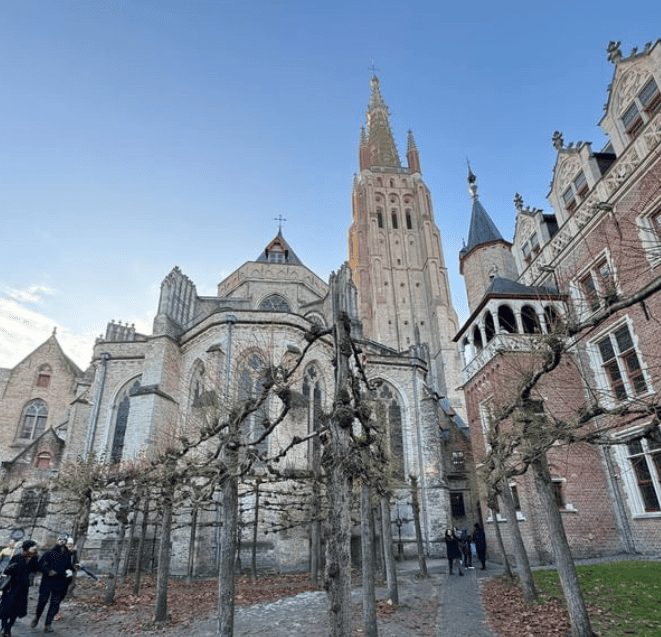
Bruges is the capital and largest city of the West Flanders province in the Flemish region of Belgium. Its residents speak Dutch, and the city’s distinctive Flemish architecture features brick facades. One of the reasons I love visiting Bruges is that it’s listed as a UNESCO World Heritage Site thanks to its well-preserved medieval architecture.
How to Get to Bruges, Belgium
Before heading to Bruges, I spent some time in Amsterdam, the Netherlands. To get to Bruges, I took a Flixbus from Amsterdam Sloterdijk station. The journey took about 5 hours and 30 minutes, with a 1.5-hour layover in Lille, a city on the Belgium-France border. Another option to reach Bruges is by flying to the nearest airport, Brussels South Charleroi, or by taking a train or driving.
From Bruges station, I walked for 20 minutes to the city center. If you prefer public transport, you can take a taxi or a bus. Look for buses marked “Centrum,” which will take you to Grote Markt, the city’s main square.
How to Get Around Bruges, Belgium
Like Amsterdam, many people in Bruges cycle around the historic center. The city’s classic views and canals make it perfect for exploring by bike. Fortunately, a local friend lent me a bike, and I spent the day cycling through Bruges, soaking in its romantic atmosphere.
Another great way to explore Bruges is on foot. The city center isn’t too large, and there’s so much to see and discover that you might miss if you travel by bike, bus, or taxi. I opted to join a walking tour, which lasted 1.5 hours and took us through every historical and interesting corner of Bruges, while the guide shared stories about the city’s past. Walking tours have become one of my favorite activities when traveling solo. Not only do you gain knowledge and have fun, but you also have the chance to make new friends while traveling. In addition to the historical walking tour, I joined a beer walking tour in the evening, where we explored various bars and sampled local beers.
Things to See & Do in Bruges, Belgium
1. Join a Canal Cruise
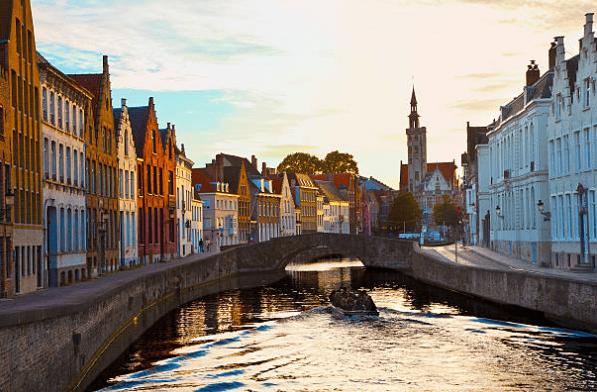
For some reason, cruising along canals or rivers has become one of my favorite activities in European cities like Strasbourg and Paris. It’s always such a fun and romantic experience. In Bruges, I couldn’t resist hopping on a boat as soon as I saw tourists cruising along the canals. The cost is 12 euros per person for a 30-minute trip.
While it may be a popular tourist activity, a boat ride offers views of some wonderful spots that can’t be reached on foot, including Rozenhoedkaai, one of the most photographed areas during the cruise.
You’ll also get to see Bruges beyond its historic center, as the boat takes you through canals that stretch beyond the city.
2. Grote Markt

Grote Markt, the central square, is the heart of Bruges. Most tourists head here first before exploring other parts of the city. I visited during the early winter, and although it rained and I rarely saw the sun, the square still looked stunning, surrounded by grand medieval and gothic-style buildings. Most of the buildings now house cafes, restaurants, souvenir shops, and museums to cater to tourists. There are also horse-drawn carriages offering rides around the square.
Although I didn’t have time to sit in one of the cafes, I’ve heard that the prices around Grote Markt can be a bit high, so you may want to consider other spots if you plan to sit down in Bruges.
Another fun thing to do at Grote Markt is visiting the Christmas Market. It was the first Christmas market I’ve ever been to in Europe, and even though the cold air dried out my face and hands, I stayed as long as possible at Bruges’ Christmas market.
3. The Belfry Tower

This 83-meter-tall bell tower dates back to the 12th century. For 8 euros, you can climb 366 steps to the top and enjoy a panoramic view of Bruges.
Since it’s one of the city’s top attractions, it’s best to visit early (opens at 9:30 AM) to avoid long lines.
4. Minnewater Park
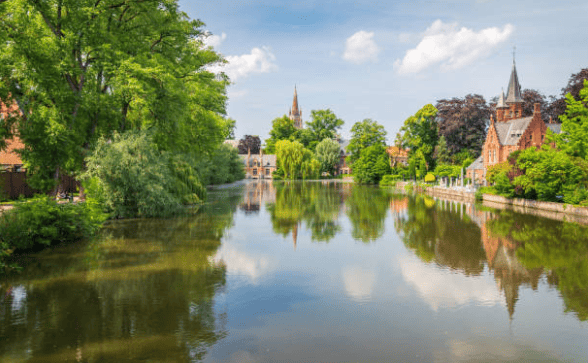
One of the most beautiful spots in Bruges! I visited it during a walking tour, so I couldn’t stay long, but if you come across Minnewater Park (also known as Lake of Love) during your walk, you should definitely spend some time there. It’s rare to see views like this in Indonesia—white swans swimming peacefully in the lake and grazing on the green grass. Simply stunning!
5. Begijnhof (Beguinage)

Located near Minnewater Park, Begijnhof is a must-visit attraction in Belgium. It was home to the Bruges beguines for 700 years until 1937, and now it functions as a convent for Benedictine sisters. Founded in 1245, the main attraction of Begijnhof is its beauty—white-painted houses surrounding a large garden with tall poplar trees. The atmosphere here is peaceful and serene.
6. Basilica of the Holy Blood

This Roman Catholic church is famous for housing a cloth said to be soaked in the blood of Jesus. In my opinion, the basilica is worth visiting for its stunning, rather magical architecture alone. Entry to the basilica is free, but if you want to visit the museum, the ticket costs 5 euros.
7. Tasting Bruges Specialty Food & Drinks

From waffles, frites (not French fries!), and Belgian chocolate to Bruges beer, you must try these local specialties while visiting Belgium. It’s easy to find waffle and frites stalls, especially around Grote Markt, and Bruges beer can be enjoyed at nearly any bar or restaurant in the city. In my experience, Belgian beer is the best I’ve ever tasted.
Since Bruges is so close to France, it’s definitely on my list for my spring vacation next year. I’ll need to return to Bruges because my last visit was too short—just two days and all by myself. If you’re planning to visit Bruges, I recommend staying for at least three days to fully explore everything this beautiful city has to offer.

